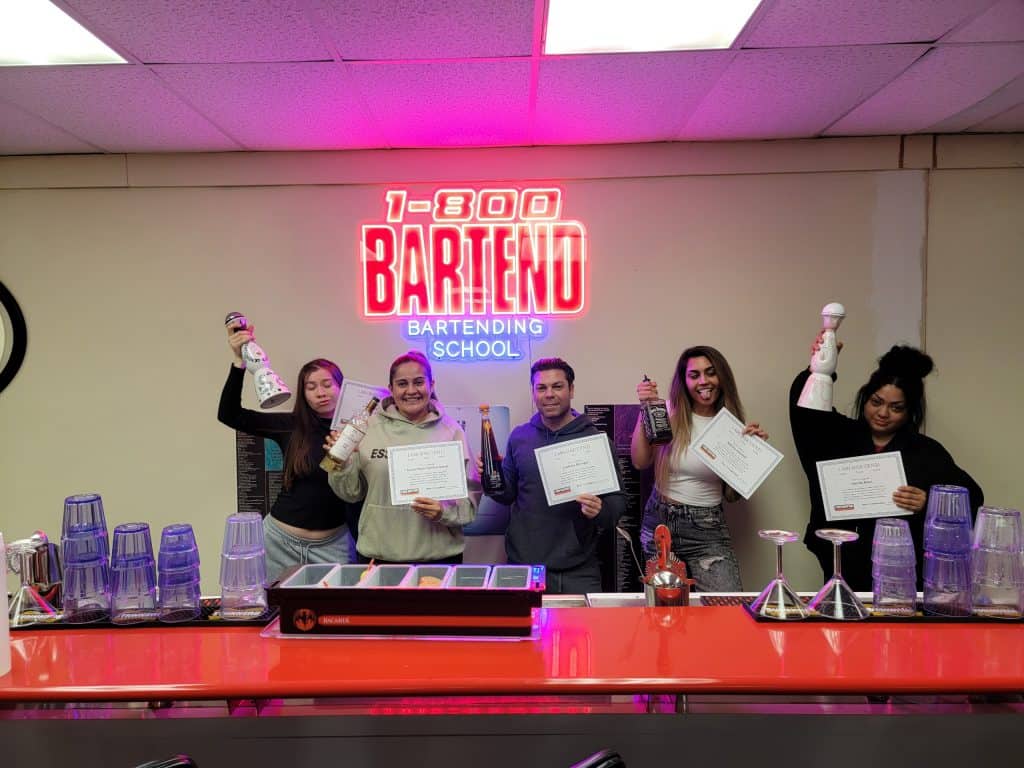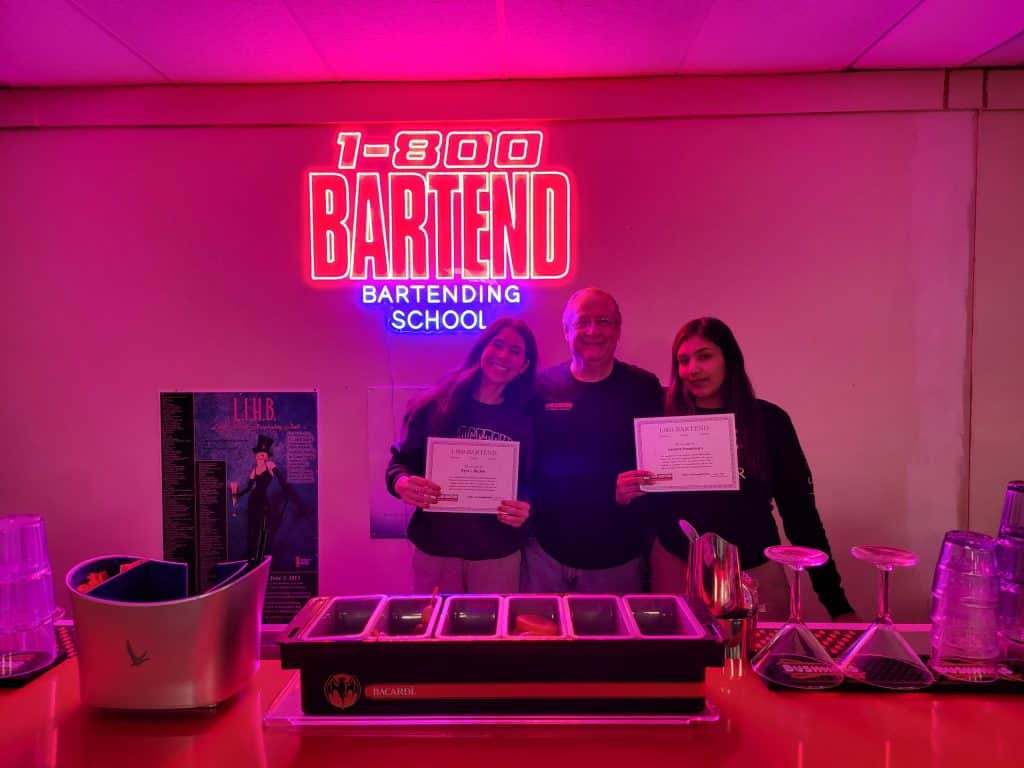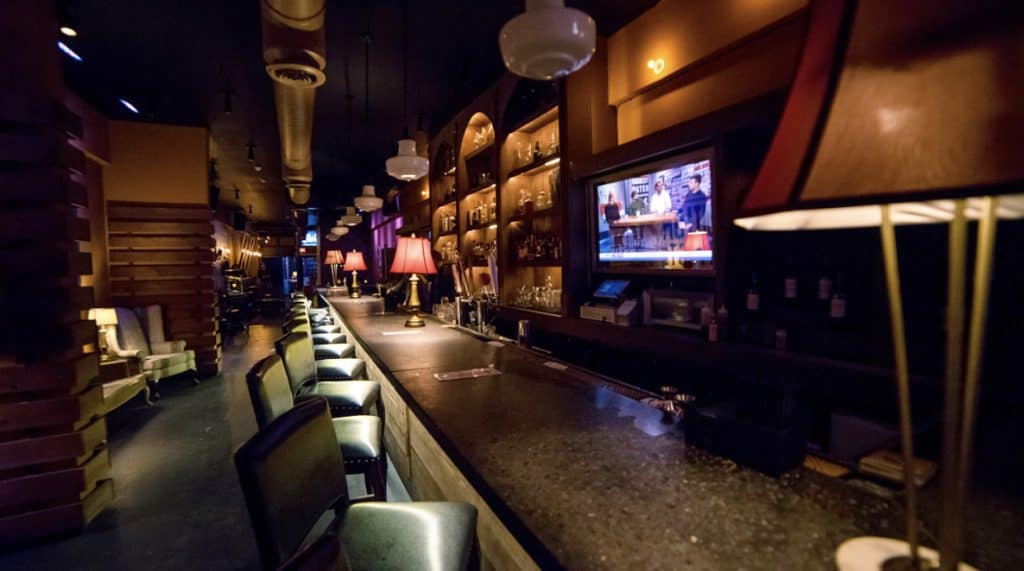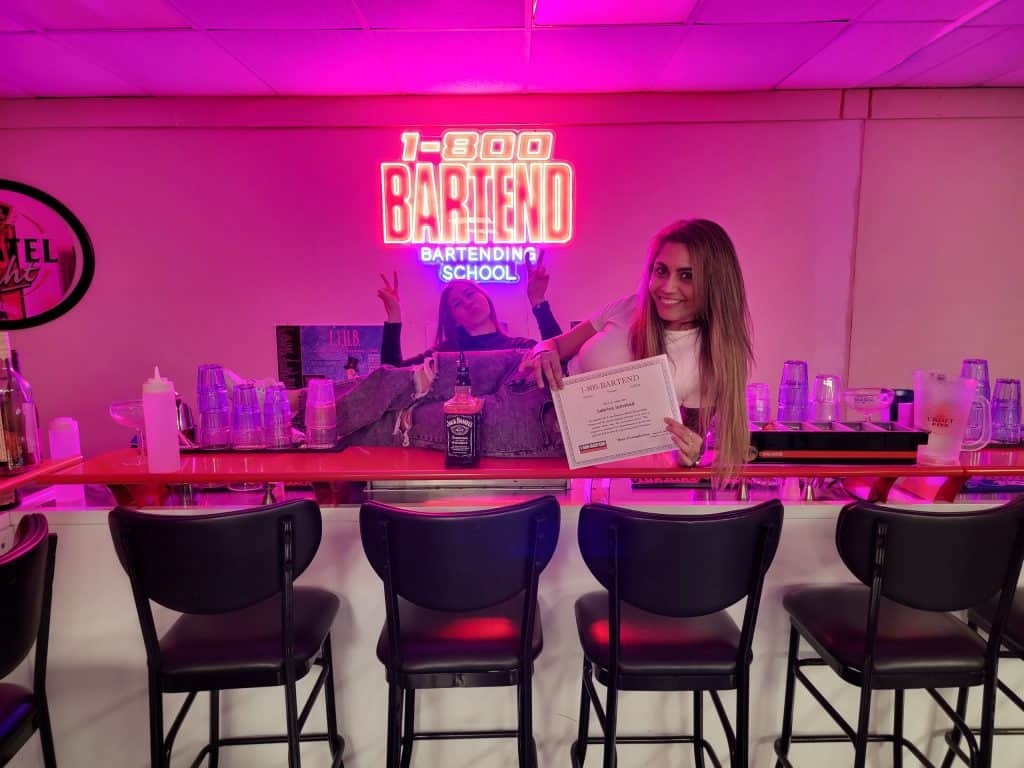Ready to bring your bartending skills to life? 1800 Bartending School in Stony Brook, NY can help you earn your bartending license while building confidence in your craft.
Reviews

Learn More About 1800 Bartending School
At 1800 Bartending School, we believe in empowering future bartenders in Stony Brook, NY to succeed. Our training programs offer a balance of hands-on experience and valuable industry knowledge to help you thrive in the field. Whether you’re learning to craft classic cocktails or understanding the legal side of bartending, we’re here to help.
Located in Suffolk County, we’re part of the vibrant local bartending community and committed to helping you gain the skills you need to excel. Call 516-212-9850 to find out how we can get you started in mixology classes today.

Steps to Becoming a Mixologist


Why Invest in Bartending License Certification?
A bartending license isn’t just formality – it’s your first step toward becoming a trusted professional in the industry. Certification not only shows you’re qualified but also prepares you to meet local requirements, like obtaining ATAP certification and the necessary permits for Suffolk County.
At 1800 Bartending School, we offer practical training that covers everything from mastering mixology to understanding Stony Brook, NY’s regulations, so you can feel confident as you step into your first bartending job. Ready to start your career? Call 516-212-9850 today, and let’s talk about how we can help you succeed.
Stony Brook was first settled in the late 17th century. It was originally known by the native name Wopowog and then as Stony Brook, with both names likely referring to the interconnected bodies of water at the hamlet’s western edge. It began as a satellite community of adjacent Setauket, New York, the Town of Brookhaven’s first settlement, and its land was included in the initial 1655 purchase from the native Setalcott tribe.
A gristmill was built in 1699 on the water body now known as the Mill Pond. The current structure, which replaced the original in 1751, ground grain into the 1940s and has since been repurposed for public tours. For religious services and education, the hamlet’s original residents had to attend institutions in the neighboring communities of Setauket and St. James. In the latter half of the 18th century, activity began to shift from the mill area north toward the harbor as new residences, a number of which still stand, were constructed.
Stony Brook was a remote area through the 18th century aside for a modest amount of commerce near the mill at the intersection of Main Street and Harbor Road. The community’s development was stalled by its poorly accessible harbor relative to nearby Setauket and Port Jefferson. In the 1840s, local painter William Sidney Mount led a call for the harbor’s dredging. This was completed twice, but after the harbor filled in both times the effort was abandoned. Lacking the resources of its neighboring harbor settlements, Stony Brook based its economy on agriculture and the cordwood industry.
Learn more about Stony Brook.Here are some bartending-related links:
Mon - Sat:
9AM - 5PM
Sunday:
Closed
Sign up, get trained, and let’s get you behind the bar in just one week. Your future in bartending starts now!

1-800-Bartend
For Students
For Businesses
Helpful Links